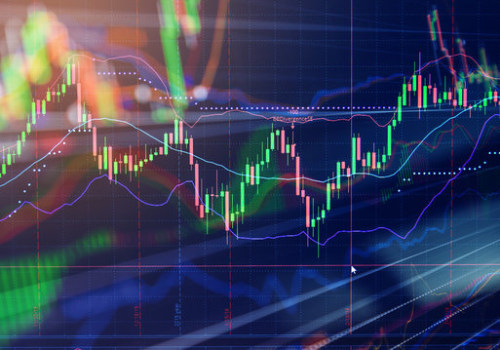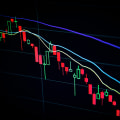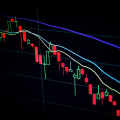In the world of forex trading, understanding lot size is essential. Lot size refers to the volume or quantity of a particular trade. It plays a crucial role in determining risk, profit potential, and overall trading strategy.
Understanding Lot Size in Forex
Forex trading involves the buying and selling of currency pairs. Lot size is the standardized quantity used to measure these transactions. It determines the position's size and the amount of currency bought or sold. Lot sizes may vary based on the type of account and trading platform used.
Different Types of Lot Size
Micro Lot Size
A micro lot size refers to a trade size of 1,000 units of the base currency. It is often the smallest lot size available and is suitable for beginners or traders with small account balances. Trading with micro lots allows for better risk management and flexibility.
Mini Lot Size
A mini lot size represents 10,000 units of the base currency. It is larger than a micro lot but smaller than a standard lot. Mini lots are commonly used by intermediate-level traders who have gained some experience in the forex market.
Standard Lot Size
A standard lot size is the largest trading volume available. It consists of 100,000 units of the base currency. Standard lots are typically used by professional traders, institutions, and those with substantial trading capital.
Choosing the Right Lot Size
Selecting the appropriate lot size is crucial for effective trading. Factors to consider include risk tolerance, account size, trading strategy, and market conditions. Traders should carefully assess these elements before determining the lot size that aligns with their goals and risk appetite.
Importance of Lot Size in Forex Trading
The lot size directly impacts the potential profit or loss of a trade. It influences the monetary value of pip movements, which are the smallest price increments in forex trading. The correct lot size helps in managing risk, optimizing position sizing, and maintaining consistent performance.
Calculating Lot Size
To calculate the lot size, traders need to consider several variables, including the account balance, risk percentage per trade, and stop loss level. Various online tools and trading platforms offer calculators that simplify this process. Understanding how to calculate lot size is essential for risk management.
Factors to Consider in Lot Size Calculation
When determining the lot size, traders should take into account factors such as account equity, leverage, and the currency pair being traded. It is crucial to strike a balance between potential profits and risk exposure. Traders should also consider market volatility and their individual trading goals.
Lot Size and Risk Management
Lot size is an integral part of risk management. It allows traders to control the amount of capital at stake in each trade. By adjusting the lot size according to risk tolerance and stop loss levels, traders can protect their accounts from significant losses.
Lot Size and Leverage
Leverage amplifies both profits and losses in forex trading. The chosen lot size determines the effective leverage applied to a trade. Higher lot sizes combined with high leverage can increase potential gains but also magnify losses. Traders must exercise caution and avoid excessive leverage.
Lot Size and Trading Strategies
Different trading strategies require different lot sizes. Scalpers, who aim to profit from small price movements, often use smaller lot sizes. Position traders or swing traders, on the other hand, may opt for larger lot sizes to capture significant market trends. The lot size should align with the trading strategy's time frame and objectives.
Lot Size and Account Balance
The lot size should be proportionate to the trading account balance. Overexposure to a trade can deplete the account quickly, while very conservative lot sizes may limit profit potential. Traders should strike a balance that reflects their risk tolerance and account growth objectives.
Lot Size and Position Sizing
Lot size affects position sizing, which determines the number of units or contracts traded. Proper position sizing helps manage risk and maintain consistency in trading. It ensures that no single trade can significantly impact the overall account balance.
Lot Size and Stop Loss Placement
Stop loss orders are vital risk management tools. The chosen lot size influences the placement of stop loss orders, as larger positions may require wider stop loss levels. Traders must carefully determine the lot size to align with their desired stop loss strategy.
Lot Size and Profit Targets
Similarly, lot size affects profit targets. Larger lot sizes can generate more significant profits, but they also require the market to move in favor of the trade. Traders should set realistic profit targets based on their lot size and market analysis.
Lot Size and Market Volatility
Market volatility influences the appropriate lot size. Higher volatility may require smaller lot sizes to mitigate risk, while lower volatility may allow for larger positions. Traders should consider the currency pair's historical volatility and adjust the lot size accordingly.
Lot Size and Margin Requirements
Margin requirements vary based on the chosen lot size. Larger positions necessitate more substantial margin deposits. Traders must ensure they have sufficient margin to support their chosen lot size and maintain their trades.
Lot Size and Trading Psychology
The lot size has psychological implications for traders. Trading with an overly large lot size can induce fear and emotional decision-making, while trading with a very small lot size may lead to frustration due to limited returns. Striking the right balance promotes a confident and disciplined trading mindset.
Common Mistakes in Lot Size Selection
Novice traders often make mistakes when selecting lot sizes. These mistakes include using excessively large lot sizes, underestimating risk, neglecting proper position sizing, and failing to adjust lot sizes based on market conditions. Traders should learn from these mistakes and adopt a disciplined approach.
Advantages of Trading with Proper Lot Size
Trading with the appropriate lot size offers several advantages. It allows for better risk management, consistent position sizing, and controlled exposure to the market. Proper lot sizing aligns with trading strategies, improves profitability, and promotes long-term success.
Disadvantages of Incorrect Lot Size
Incorrectly choosing the lot size can lead to adverse consequences. Overexposure to the market can result in significant losses, while overly conservative lot sizes may limit profit potential. Traders must understand the drawbacks of incorrect lot sizing and strive for an optimal balance.
Q1: What is the recommended lot size for beginners?
A1: Beginners are advised to start with micro lots (1,000 units) to limit risk exposure and gain experience in forex trading gradually.
Q2: How does lot size affect the pip value?
A2: The lot size determines the monetary value of each pip movement. Larger lot sizes result in higher pip values.
Q3: Can lot size be changed during a trade?
A3: Lot size can be adjusted before entering a trade. However, once a trade is open, the lot size remains fixed unless additional trades are added or existing trades are closed.
Q4: How does lot size relate to account leverage?
A4: Lot size, combined with leverage, determines the effective leverage applied to a trade. Higher lot sizes and leverage increase both potential profits and losses.
Q5: Should lot size be the same for every trade?
A5: Lot size should vary based on risk tolerance, trade setup, and market conditions. It is not necessary to use the same lot size for every trade.
Q6: How can I calculate the appropriate lot size for my account?
A6: Several online calculators and trading platforms offer lot size calculators based on account balance, risk percentage, and stop loss levels. Utilize these tools to determine the appropriate lot size for your trades.
Q7: What role does lot size play in risk management?
A7: Lot size is integral to risk management as it determines the amount of capital at stake in each trade. Proper lot sizing helps control risk exposure and protect trading accounts.
Q8: How does lot size affect position sizing?
A8: Lot size directly influences position sizing. It determines the number of units or contracts traded and ensures consistent position sizing across trades.
Q9: Can lot size be adjusted based on market volatility?
A9: Yes, lot size can be adjusted based on market volatility. Higher volatility may require smaller lot sizes to manage risk effectively.
Q10: Is it possible to change lot size after entering a trade?
A10: Lot size remains fixed for an open trade unless additional trades are added or existing trades are closed. It is important to determine the appropriate lot size before entering a trade.
Conclusion
Lot size is a crucial component of successful forex trading. Understanding how to determine the appropriate lot size based on risk tolerance, account balance, and trading strategy is essential. Proper lot sizing allows for effective risk management, consistent position sizing, and improved trading performance. By considering the factors discussed in this article, traders can enhance their decision-making and increase their chances of long-term success.












Leave Reply